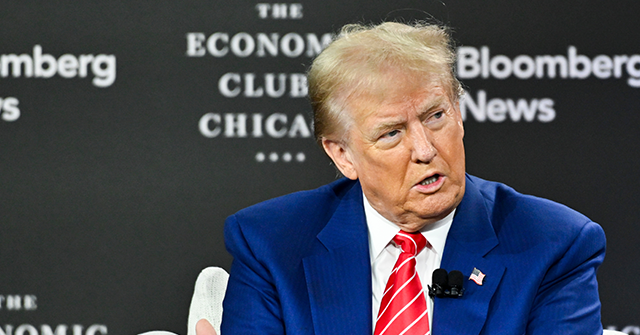Donald Trump has articulated a bold case for tariffs during his address at the Economic Club of Chicago, positioning them as a revolutionary tool for trade rather than an outdated protectionist method. Trump’s enthusiastic declarations about tariffs, such as calling them the “most beautiful word in the dictionary,” underscore a transformative approach that looks beyond traditional criticisms. While many detractors view tariffs as harmful to the economy, Trump’s perspective suggests that they can act as catalysts for growth by compelling foreign companies to invest in U.S. manufacturing. This acknowledgment signals a potential departure from established economic orthodoxy that has dominated for decades, reinforcing the belief that tariffs can stimulate competition and innovation in American markets rather than suppress them.
Critics of tariffs often argue that they hinder economic development by insulating domestic businesses from international competition. However, Trump rebuts this viewpoint by arguing that tariffs do not exclude competition but rather relocate it. By imposing tariffs on imported goods, foreign companies are incentivized to establish production facilities in the U.S. to avoid steep tariffs on their imports. This shift not only maintains competitive pressures but invigorates the domestic market as foreign firms integrate their advanced technologies and manufacturing practices into the American economy. Consequently, instead of allowing inefficiencies to persist, Trump’s tariff strategy fosters an environment where U.S. companies are challenged to elevate their performance and innovate actively, prompted by direct competition from global enterprises.
Furthermore, the argument that tariffs promote monopolies and reduce competition is increasingly outdated. Whereas historical protectionist policies may have shielded a limited number of domestic firms from competition, Trump’s tariffs are explicitly aimed at enhancing market competition by welcoming foreign companies to compete directly in America. This strategy helps dismantle the notion of monopolistic protectionism, which primarily serves a select group of entrenched industries. Instead, Trump’s tariffs seek to import competitive capabilities, encouraging a diverse range of firms to set up shop in the U.S. and thereby elevating the quality of competition faced by American manufacturers.
The critique of tariffs as detrimental to innovation fails to recognize their potential benefit in the context of technological advancement. By drawing foreign firms to the U.S., Trump’s strategy is poised to introduce cutting-edge technologies and methodologies to the American industrial landscape. When international companies relocate their operations, they bring not only capital investment but also advanced research and development efforts. This influx of innovation can drive the U.S. tech sector to new heights, helping domestic firms accelerate their own innovation cycles in response to the competition. This approach challenges the traditional narrative that sees tariffs as barriers to progress, instead casting them as facilitators of technological expansion within the country.
Moreover, the focus on any immediate negative impacts of tariffs overlooks the long-term advantages of bolstering the U.S. industrial base. Trump’s tariff strategy encourages foreign manufacturers to produce goods domestically rather than relying on global supply chains, an issue brought to the forefront during the COVID-19 pandemic. By promoting local production, tariffs help to construct a more self-reliant economy that minimizes vulnerability to international disruptions, offering a comprehensive advantage to both workers and consumers. The argument shifts from the perception that tariffs inherently increase costs to the reality that building a robust domestic manufacturing infrastructure ultimately benefits the entire economy.
Lastly, while critics hastily label tariffs as a form of protectionism, Trump’s approach suggests a more nuanced and strategic understanding of global trade dynamics. Rather than employing tariffs as blunt instruments to fortify domestic industries, he advocates for their use as a sophisticated method of reallocating resources, creating competitive advantages, and fostering economic resilience. Trump’s tariffs aim to stimulate a competitive landscape by integrating the world’s best companies into the American market, thereby enhancing innovation, market efficiency, and ultimately benefitting consumers. His call for tariffs isn’t a rejection of free trade principles; rather, it represents an invitation for global firms to join the American economic arena on equitable terms, a strategy that could appeal even to staunch proponents of free trade.

